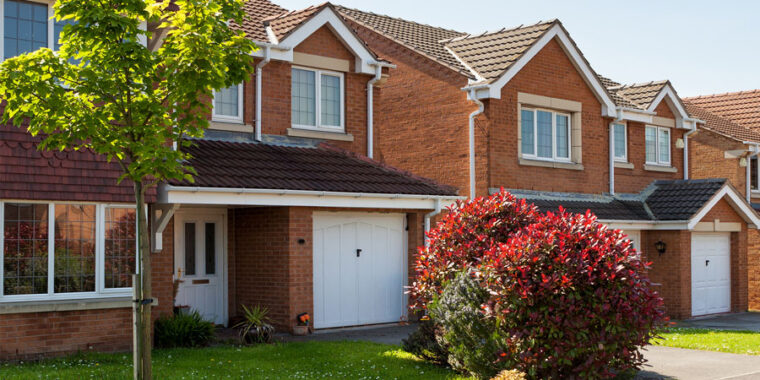What exactly is U-value in double glazing? And why should you care?
A window’s U-value impacts everything from your comfort to your energy bills. But that’s not all. Knowing the right U-value can also help homeowners make a more environmentally friendly choice.
Keep reading as we break down everything you need to know about U-value – what it is, how it’s measured and why it matters.
What Is the U-Value in Double Glazing?
The U-value in double glazing measures heat transfer and tells you how well a window prevents heat from escaping. It tells you how effectively the glass and its insulating materials keep warmth inside your home. The U-value is measured in units of W/m²K. The lower the U-value, the better the window keeps heat inside.
How does it affect homeowners?
In double glazing, a lower U-value means less heat escapes in winter, keeping your home warmer and reducing the need for additional heating. For homeowners, a low U-value translates to better energy efficiency, lower heating bills and increased comfort all year round.
How is U-Value Measured
This is where it gets technical, but understanding how U-value is measured can guide you when choosing windows for your home. A double-glazed window’s U-value measures how much heat can pass through the panes. It’s calculated in units of W/m²K, which stands for watts per square meter per degree Kelvin.
For example, double-glazed windows typically have U-values ranging from 1.6 to 3.0, significantly improving over single-glazed windows with much higher U-values.
As mentioned previously, when looking for energy-efficient windows, remember: the lower the U-value, the more effectively your window will help keep your home comfortable and lower your energy bills.
The U-Value of Double Glazing vs. Other Window Types
When choosing the right windows for your home, understanding how U-value varies across different types of glazing can make a big difference in energy efficiency. Here’s a quick comparison:
- Single Glazing – Single-pane windows generally have high U-values, around 4.0 to 6.0. This means they allow a lot of heat to escape, making them less energy-efficient and ineffective at keeping your home warm in colder months.
- Double Glazing – With two layers of glass and an insulating gap between them, double-glazed windows typically achieve U-values between 1.6 and 3.0. This lower U-value means double glazing is far better at retaining heat than single glazing, making it the most popular and cost-effective option for many homeowners.
- Triple Glazing – Triple glazing goes a step further, adding an extra layer of glass and insulation. This type of window can achieve U-values as low as 0.8 to 1.5, maximising insulation. While it’s more expensive than double glazing, triple glazing is usually installed in countries where the weather is usually installed in countries where the weather is colder and harsher, providing superior insulation to retain heat and reduce energy costs.
Why U-Value Matters for Homeowners
Choosing windows with a low U-value offers multiple benefits, such as:
- Lower U-values can reduce monthly heating bills.
- Maintain a stable indoor temperature, reducing uncomfortable draughts.
- Reduce your home’s carbon footprint, making it a more eco-friendly choice for homeowners who value sustainability.
- Double glazing with a low U-value also blocks out more external noise, creating a quieter indoor environment.
- Lowering your windows’ U-value is a desirable feature and may even increase the resale value of your home.
How to Choose the Right U-Value for Your Home
Here are some guidelines to help you make the right choice:
Where You Live
Aim for a lower U-value (typically below 1.6) in colder climates to keep your home warmer and save on heating costs. A slightly higher U-value may provide adequate insulation in milder climates while decreasing costs.
Balancing Cost
Lower U-values provide better insulation but often come at a higher price. Double glazing typically offers an ideal balance, delivering good energy savings without the higher expense of triple glazing.
Check for Additional Features
Look for double-glazed windows with added features like low-emissivity glass and gas-filled cavities. These enhancements can boost the effects of a lower U-value and better insulate without an extra glass layer.
Assess Existing Home Insulation
If your walls and roof are already well-insulated, investing in windows with lower U-values can maximise energy efficiency throughout your home.
Work with a Professional
An experienced window installer will help you identify the most suitable U-value based on your specific home needs and budget, ensuring you pay the right amount for optimal comfort.
A Warmer, More Efficient Home Awaits
By understanding U-value, you’re not just picking windows — you’re opting for better comfort, lower bills and a greener footprint. Double glazing with the right U-value is a smart step toward a cosy, efficient home.
